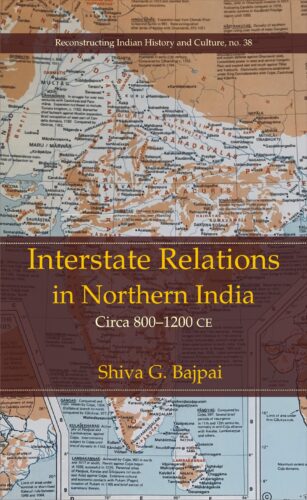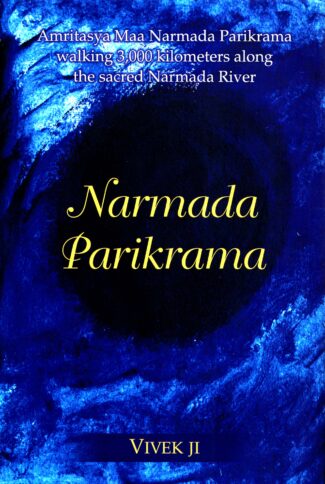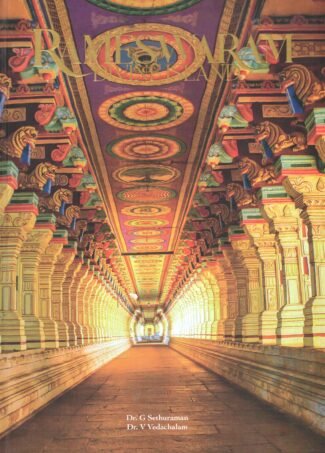Showing 1–12 of 15 results
Published in 1862, Beveridge’s A Comprehensive History of India is an important landmark in the historiography in modern India. In writing it Beveridge did not trust to previous compilations but derived his materials as much as possible from original and official sources. Written after due research in a perspicuous style, Beveridge has narrated the history of India beginning with its earliest period and continued to be mutiny of 1857, thus making his history a complete and comprehensive history of India. Besides, Beveridge’s interpretation of history is more objective and impartial than many historians of India who wrote before and after him. As a result it became possible for Beveridge to see the many events of Indian history without being biased. That is why Beveridge will find today more readers than, say, historians like Mill’s and Vincent Smith.
Published in 1862, Beveridge’s A Comprehensive History of India is an important landmark in the historiography in modern India. In writing it Beveridge did not trust to previous compilations but derived his materials as much as possible from original and official sources. Written after due research in a perspicuous style, Beveridge has narrated the history of India beginning with its earliest period and continued to be mutiny of 1857, thus making his history a complete and comprehensive history of India. Besides, Beveridge’s interpretation of history is more objective and impartial than many historians of India who wrote before and after him. As a result it became possible for Beveridge to see the many events of Indian history without being biased. That is why Beveridge will find today more readers than, say, historians like Mill’s and Vincent Smith.
“Published in 1862, Beveridge’s A Comprehensive History of India is an important landmark in the historiography in modern India. In writing it Beveridge did not trust to previous compilations but derived his materials as much as possible from original and official sources. Written after due research in a perspicuous style, Beveridge has narrated the history of India beginning with its earliest period and continued to be mutiny of 1857, thus making his history a complete and comprehensive history of India. Besides, Beveridge’s interpretation of history is more objective and impartial than many historians of India who wrote before and after him. As a result it became possible for Beveridge to see the many events of Indian history without being biased. That is why Beveridge will find today more readers than, say, historians like Mill’s and Vincent Smith. “
“Kailash Nath Dikshit (b.1936) is an eminent archaeologist, author and editor of numerous works on India’s civilization, and the organizer and director of many archaeological expeditions. He did his MA in Ancient Indian History and Archaeology from Lucknow University and Post-Graduate Diploma in Archaeology from Archaeological Survey of India (ASI). Dikshit joined ASI in 1957 and became its Joint Director General by serving in different positions from 1957 to 1994. He has travelled extensively and has been bestowed with many coveted national and international awards. He is still organizing the archaeological activities for the Indian Archaeological Society (IAS) in different parts of the country. He excavated many sites including Ujjain, Kalibangan, Bairat, Amkheri, Bargaon, Allahapur and Chiclim (Goa). Along the dried bed of Saraswati River, he investigated Nohar, Sothi and Sherpura. He also directed the project on ‘’Archaeology of Ramayana Sites’’ in collaboration with Professor B.B. Lal of Indian Institute of Advanced Study, Shimla, and excavated Ayodhya, Shringverpur, Bhardwaj Ashram, Pariar and Chitrakoot. He also directed excavations at Hulas. He was awarded DAAD fellowship (1965-67). He has visited museums in Berlin, Paris, London, Cambridge, Rome and Cairo. Under Cultural Exchange Programme and International Conferences, he also visited Turkey (1983) and USSR (1984), Sri Lanka (1987), Paris (1989), Luanda, Angola (1990) for the reorganization of Armed Forces Museum. As visiting fellow, he has been to Kansai University, Japan (1991) and Ulanbator (Mangolia) (1993) for providing a report on the conservation of Buddhist monasteries. After his retirement in 1994, he directed the Kampilya excavation (2000-01) with Ca Foscari University, Venice and delivered lectures at Venice and Padova (2001). He visited Canada (2007) to attend the ICOMOS Conference. He attended the International Conference on Archaeology in Islamabad, Pakistan (2012), and was in Johannesburg and Durban, South Africa (2012) to conceptualize the image of Mahatama Gandhi at Pietermaritzburg Railway Station. He visited Kenya (2017) and Ethiopia for International Conference at Kisumu. In 2019, he visited Colombo (Sri Lanka) to attend the International Conference on Archaeology, History and Heritage, and also delivered a public lecture at University of Kelaniya (Colombo). He was bestowed with following National Awards: Allahabad Museum conferred Life Time Achievement Award as the best Archaeologist 2018. M.S. University, Baroda, honoured him for his contribution to South Asian Archaeology (2012). He was awarded Dr. Vishnu Sridhar Wakankar Rashtriya Samman, Bhopal (2010-11). He was conferred Member of General Assembly, ICCR (2016-19), Central Advisory Board of Archaeology (ASI) (2014- ), Committee on National Museum Institute (2019 -22). Dikshit has to his credit more than 150 research papers, reviewed more than 60 books, edited a number of books and journals including Archaeological Perspectives of India since Independence, Neolithic-Chalcolithic Cultures of Eastern India, co-edited Megalithic Cultures of South India, and has been editing Puratattva and History Today. He was honoured with DLitt by Deccan College. “
This book develops a consilience of research and thinking in epigraphy, archaeology, and linguistics on the Indic Brahmi writing system. Its objective is to identify the problems that need to be tackled by anybody who tries to develop a theory of the Brahmi writing system. As for the currently scientifically supported hypothesis that Brahmi originated in Tamil Nadu during the sixth century BCE or earlier, Patel opts for the need to keep this as an idea for the working basket awaiting new archaeological research in the sixth-century Magadha region.
The book deliberates upon how ancient Tamil Nadu was receptive to literacy. The Brahmanical fascination for orality blocked literacy in Vedic India. The brahmanas from north India entered Tamil Nadu only during the third century bce and lived away from residential areas. Tamil Nadu at the time had no caste system. This is reflected in the Sangam literature, which followed historically the grammarian Tolkappiyar. The conditions in Sri Lanka before and after the arrival of Buddhism are noted in relation to the rise of literacy. The relationship between Brahmi in Sri Lanka and Tamil Nadu is highlighted for the purpose of further research. Also noted is the need for research on the differences between Dravidian and northern scripts in the way the aksharas are formed in graphic representation.
The region of Orissa, from the point of view of studies in historical geography, has always remained a challenging area, not least owing to its vast and complicated history, varied geography and intriguing sources. Though the historical geography of this region has been considered for analysis in the past, it has only been featured as a chapter or in a section as part of a larger whole. Thus, this work is perhaps the first attempt to present a comprehensive research study of the historical geography of Orissa.
The author, guided by long research experience, culls material from all available sources — literary, epigraphic, etc. — to subject the theme to a systematic analysis that leaves not a facet of the subject unexplored. He describes and delves into the ancient, medieval and modern periods of historical growth to underline the historico-geographical significance of various kingdoms and places of importance that emerged, flourished and disintegrated at different times — as Kalinga; South Koshala; Odri, Utkala or Toshala; Trikalinga; and the many Mandala states. He studies the physical features of the area, the mountain system of the Orissa state and its rivers, with a view to showing how they have shaped its history. The transport and communication routes in the region since ancient times are retraced to reveal the region’s strong cultural and economic foundations among other things.
This book, from first to last, unfolds a wealth of interesting and useful information. Complete with an exhaustive bibliography, index and maps of Orissa, the book can immensely aid further research works on the subject.
The experiences and knowledge from our past are recorded in manuscripts which have been handed down to us over several thousand years. The Government of India, through the Department of Culture, took note of the importance of this vast tangible heritage and, in order to preserve and conserve as well as to make access to this wealth easy, established the National Mission for Manuscripts (NMM). In order to disseminate the knowledge content of manuscripts, the Mission has taken up several programmes such as lectures, seminars and workshops. The Mission has published the proceedings of the above-said programmes under the following series: “Samiksika” (on conservation), “Tattvabodha” (comprising lectures based on manuscripts delivered by eminent scholars), “Samiksika” (research-oriented papers presented in the seminars), “Krtibodha” (transcribed and edited texts prepared at advanced level manuscriptology workshops conducted by NMM) and “Prakasika” (publication of rare, unpublished manuscripts). The present work, Samiksika-16 comprises the proceedings of the conference on History and Development of Mathematics held in the Samskrita Academy, Chennai in collaboration with the National Mission for Manuscripts.

Interstate Relations in Northern India (8001200 ce) is a critical analysis of the Empire and State, the RÀja-Maõçala, in medieval India. The book is an excellent interpretation of the composition of the state, the ancient Indian principles and categories of interstate relations dealing with rÀjya and maõçala (circle of states).
This thoroughly researched work examines the state and its seven constituent elements (rÀjya). While avoiding the temptation of using Western categories and principles of international law, it provides an explanation of classification of states based on power, independence, tribute and political allegiance. In particular, it defines and analyses the ÈÀçguõya (sixfold policy of sandhi (peace), vigraha (war), yana (marching), Àsana (staying quite), dvaidhÁ-bhÀva (dual policy) and saÚraya (seeking shelter thereby correcting earlier misconceptions)). Furthermore, the theoretical formulations of circle of states and interstate relations between (8001200 ce) have been placed in a historical context, and well attested by historical instances in north India. Based on geopolitics and power it demonstrates the impact of political thought on political expedients, stratagems and events, at a crucial time in Indian history. The influence of ideas on political behaviour of kings and trajectories and policies of kingdoms of the Candellas, PÀlas, ParamÀras, PratihÀras, RÀjpÂts, CÀÒukyas, RÀÈÇrakÂÇas, Arabs and CÀhamÀnas have been substantiated with facts and evidences.
The author, Dr Shiva Gopal Bajpai, is to be congratulated for providing an accurate analysis of ancient Indian political theory and interpretation of its practical application by medieval rÀjÀs, thereby making a significant contribution to our understanding of Indian history.
The book thus delves deep into the philosophies of both Bdaryaa and akara in enunciating the essential features of Brahman and Its association with the world. It thus discusses topics such as what sort of cause Brahman is?, and what sort of material causality is to be ascribed to It? It also addresses the conflicting views on the nature of Brahman like that of Vivarttavda and of Rmnuja’s Sagua-Brahman.
Ancient history of India reveals that there were two parallel traditions in India, viz. Vedic and Sramanic. The Sramana Tradition includes Jainism, Buddhism and others such as the Ajivikas and Ajtianas. Jain religious tradition is one of the oldest living religions of India. Historicity of 24th Tirthankara Mahavira in sixth century BCE is well established. The Jain records mention the name of 23 tirthankaras before Mahavira. Among them Parsvanatha was the 23rd and Neminatha was the 22nd.
Parsvanatha is now acknowledged as a historical figure by a number of scholars. The existence of Parsva’s Order in Mahavira’s time is recorded as a discussion between the followers of Parsva (caturyama) and those of Mahavira (pancayama) in the Uttara-adhyayanasiitra. Keeping this fact in mind, International School for Jain Studies (ISJS) in association with the Bhandarkar Oriental Research Institute (BORT) organized a two-day International Seminar on “Traces of Sramana Tradition (with special reference to Jainism): Prior to 650 BCE” on 5-6 October 2019 in Pune. This book contains 13 selected papers presented in this seminar exploring the available archaeological, cultural, social and literary evidences to substantiate the existence of Jain tradition before 650 BCE.

This book explores the rich history, architecture, and spiritual significance of Chidambaram, the sacred birthplace of Nataraja. With 150+ images, it delves into its artistic, philosophical, and mystical essence.
“Chidambaram is a place of great antiquity which has been revered as one of the holiest sites in India for millennia. It is widely recognised as the birth place of Nataraja – King of Dancers an iconic and highly recognisable form of divinity in the Indian culture and tradition. Beyond being a mere religious symbol the imagery of Nataraja contains many layers of deep and subtle meaning.
This book is an exploration of these concepts and offers a glimpse of the many facets of the Chidambaram temple. This publication has been carefully curated with passion and devotion and offers a visual and stimulating journey of Chidambaram through a selection of over 150 high quality pictures and art work. It also contains literary snippets, short narratives of its exotic history and architecture, along with intriguing scientific, philosophical and mystical interpretations of this legendary temple.
Whether you are an art aficionado or someone interested in history, mythology, or science and spirituality, there is something in this book for you.”

The book recounts the journey of Vivek ji and numerous others during the years 2022-23 along the revered banks of the Narmada river. The book is not just a travelogue of the author’s journey along the banks of the river, but also a documentation of the numerous ancient teerthas that are scattered along the holy banks of Narmada, which have been mostly forgotten by everyone. The teerthas are the starting point of the Narmada Parikrama, playing a crucial role in shaping this tradition. Vivek ji’s Narmada parikrama was a journey undertaken with the purpose of immersing oneself in the spiritual landscapes of the sacred Narmada river. However, it was the parikrama that ultimately uncovered and drew attention to the Teerthas.
The book recounts the journey of Vivek ji and numerous others during the years 2022-23 along the revered banks of the Narmada river. The book is not just a travelogue of the author’s journey along the banks of the river, but also a documentation of the numerous ancient teerthas that are scattered along the holy banks of Narmada, which have been mostly forgotten by everyone. The teerthas are the starting point of the Narmada Parikrama, playing a crucial role in shaping this tradition. Vivek ji’s Narmada parikrama was a journey undertaken with the purpose of immersing oneself in the spiritual landscapes of the sacred Narmada river. However, it was the parikrama that ultimately uncovered and drew attention to the Teerthas.

This book explores Rameswaram’s religious, cultural, and historical significance, detailing its temple architecture, sacred thirthas, and artistic heritage, making it invaluable for readers, students, and researchers alike.
Rameswaram, one of the renowned religious centers of India, is a well known sacred spot both for the Saivites and Vaishnavite frente period ferves as one of the cultural centers and pithru oriented spots of the sub continent for several centuries. The history and culture of any region, in the Indian sub-continent, often centers round a temple. This is actually true in the case of Rameswaram, where the temple makes a significant contribution not only to the religious life of the people, but also serves as the nucleus around which the social and cultural life of the people revolves. As this sacred place has the continuous history from very ancient past to this day, the temple there in also has been growing continuously through the centuries starting from a small one at the time of the period of the Saiva Nayanmars to the vast temple complex at the end of the Sethupati period. The temple accommodates, in addition to the sacred thirthas, beautiful architectural buildings and hundreds of marvelous sculptures which not only depict the epic and puranic themes but also reflect the contemporary social, cultural and folk traditions. The present book “Rameshwaraam – Divine Island” explains in detail the spot as a religious as well as the thirtha center and their social and cultural importance in a systematic and scientific manner. It also traces the history art and architecture of the temple. It would be of much useful to the general readers, students and researchers to understand the cultural importance of the sacred spot and artistic beauty and their legendary background.
| There are no products |